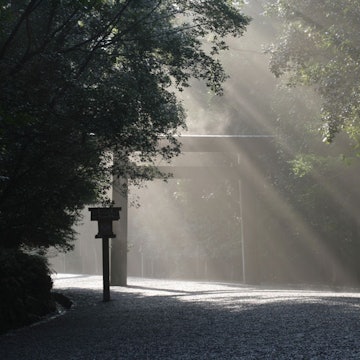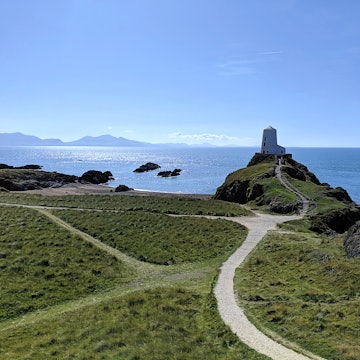

Easily reached from Osaka, Wakayama Prefecture is a wonderful spot to take your first bath in a Japanese onsen. Jonathan Stokes for Lonely Planet
There’s nothing quite like bathing in the blissfully warm, mineral-rich waters of an onsen on a trip to Japan. For generations, both locals and visitors have flocked to these ancient hot springs to rejuvenate mind, body and spirit.
And one place in particular stands out for experiencing Japan's most famous contribution to holistic healing. Wakayama Prefecture, to the south of Osaka, is a nature lover's dream. With its unspoiled natural scenery, it's the perfect place to try out one of the country’s best-loved pastimes.
Here's how to get the best from the onsen experience in Wakayama Prefecture.

Understanding the magic of onsens
Thanks to high levels of volcanic activity in Japan, the country has natural hot springs in their thousands, scattered in diverse locations all over the country. Throughout the ages, people have been lured to onsen towns by the health benefits of bathing in the warm, soothing waters, which are infused with natural minerals.
Onsens come in several varieties, from simple natural pools (be careful of the temperatures at these locations as the waters can be scalding hot) to stylish indoor bathhouses at hotels, health spas, and traditional Japanese ryokan inns. Outdoor rotenburo baths offer an invigoratingly authentic experience, often with the bonus of beautiful views.
In Japan, hot springs are celebrated for their healing properties, as well as acting as an important setting for social interaction. Visiting an onsen is a delightful way to immerse yourself in Japanese culture, though be aware that most onsens require bathers to be naked, so you'll need to leave your inhibitions at the door.
Why are there so many onsens in Wakayama?
Thanks to the sheer range of bathing options and the many locations where naturally hot mineral waters bubble to the surface, Wakayama has earned a reputation as one of the best onsen destinations in Japan. Hot spring bathing has a long history here – the historic Yunomine Onsen was founded nearly 1800 years ago, earning it a spot on the UNESCO World Heritage List.
With an abundance of hot spring retreats and spa resorts, this is the place to sample experiences such as a two-person bath on an island and a gigantic river bath that can accommodate up to 1000 bathers. Travelers can even soak their feet in a volcanically warmed foot bath while they dine!

Wakayama's best onsens
Historic springs lie dotted around the countryside in Wakayama. Wakayama Prefecture has a dedicated website with a handy guide to onsen spots around the area.
Shirahama: As well as having incredible beaches, the coastal town of Shirahama boasts some of Japan’s oldest and best-known onsens, including the open-air Shirasuna Onsen, located on the boardwalk in the middle of the town, and Sakino-yu, an onsen on a rocky outcrop with ocean views, approximately 1km south of the main beach.
To mix relaxation with regional dining, Ashiyu Alley in Shirahama’s trendy Ginza Alley dining district has thermal foot baths, allowing customers to soak their tootsies as they tuck into delicious local offerings. See the city website for more information on Shirahama's onsens.
Kawa-Yu: For a natural experience, head to Kawa-yu in the center of Wakayama, where visitors can dig their own bathing pool in the stony beach on the banks of the Oto River then take a dip in the massive Sennin-buro River Bath, a pebble-edged pool with room for 1000 bathers.
Katsuura: Nearby on the coast, the small seaside village of Katsuura is known for rotenburo that look out onto blue coves and islands. Most are associated with small hotels and ryokan inns, and the best sit right on the waterfront.

Yunomine Onsen: According to local legend, the UNESCO-listed onsen at Yunomine was created by Yakushi Nyorai, the Buddha of Healing, and it once cured a famous samurai. While we can’t verify that’s 100% accurate, it's certainly true that the onsen has rejuvenating qualities for the mind and body.
Located in the middle of the Yunomine hot springs, the Tsubo-yu onsen is set inside a small wooden shack built on an island in the river. It can be used privately (holding up to two people) for 30 minutes at a time on a first-come-first-served basis, and the admission fee also covers entry to the Yunomine Public Bathhouse, which you can visit afterward. Check out the natural hot well where visitors boil eggs and other snacks.
More onsens: Other highlights in the Wakayama region include Ryūjin Onsen, a historic hot spring village on the upper reaches of the Hidaka River in the mountainous heart of the Kii Peninsula, and Watarase, an expansive complex in a forested valley that has rich sodium-chloride pools of varying temperatures.

Tips on onsen etiquette for the uninitiated
Bathing in an onsen is a truly unforgettable experience, and while there are a few rules of etiquette to remember, this shouldn’t be a deterrent. As with any new travel experience, it's worth taking some time to research local customs and traditions, so you'll feel more at ease and have a more relaxing and enjoyable time.
The first thing to note is the requirement for nudity. This is the norm in Japan, even in mixed onsens, though many bathhouses have separate pools for men and women, or different times allocated for each. Make sure you take a shower before entering an onsen; there are dedicated washing facilities and you'll see patrons sitting on a stool and showering with soap and water using a wooden bucket.
Small hand towels are provided, and these can be used for modesty before getting in the water, but should not be used in the pool; some people place them on their heads while they bathe. Full-sized towels are left in the changing rooms. Long hair should be tied up to keep it out of the water, and eating and drinking in the water is considered impolite. Drink plenty of water before and after bathing, as the hot temperatures can cause light-headedness.
It also pays to be aware of Japan’s complex relationship with tattoos. Despite a long history of ritual body art, tattooing became associated with criminality during the Edo period, when it was used as a punishment. Even today, tattoos are perceived as being associated with crime, and many onsens do not permit entry to people with visible tattoos.
However, some places are tattoo-friendly and advertise themselves as such. To avoid disappointment, contact onsens ahead to ask about their tattoo policy. If you have a small tattoo, convenience stores such as Don Quijote sell "tattoo seals" – skin-colored plasters that can cover up smaller pieces of body art.
Once you've mastered onsen etiquette, there’s nothing left to do but relax and enjoy the therapeutic hot waters!

How to get to Wakayama
Wakayama is served by regular trains – both rapid and local – from Osaka, so it's easy to reach the region's onsens after exploring Japan's third-biggest city. Train passes such as the Ise-Kumano-Wakayama Area Tourist Pass
offer significant discounts for international visitors, covering unlimited travel on the region's trains and some bus services. Look out for periodic special
offers offered by Japan Railway and
Nankai Electric Railway.
Once you arrive in Wakayama City, buses run from Wakayama Station to other areas across the prefecture. Visitors can also take advantage of the Koyasan & Kumano Access Bus; passes offer unlimited rides between the Kōya-san area and Kumano region heritage sites such as Tsubo-yu and Kawayu.
Produced by Lonely Planet for Visit Wakayama. All editorial views are those of Lonely Planet alone and reflect our policy of editorial independence and impartiality.















